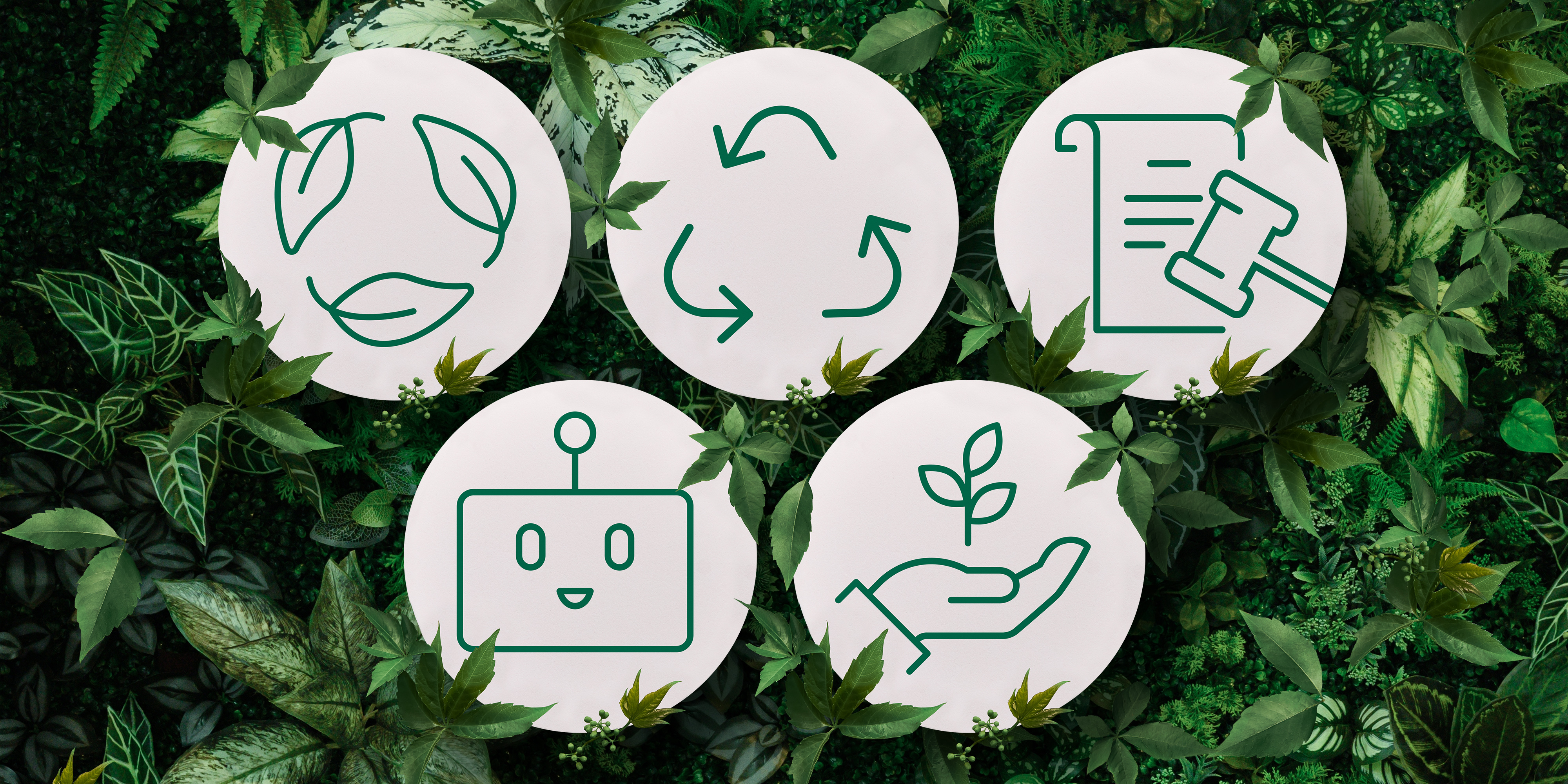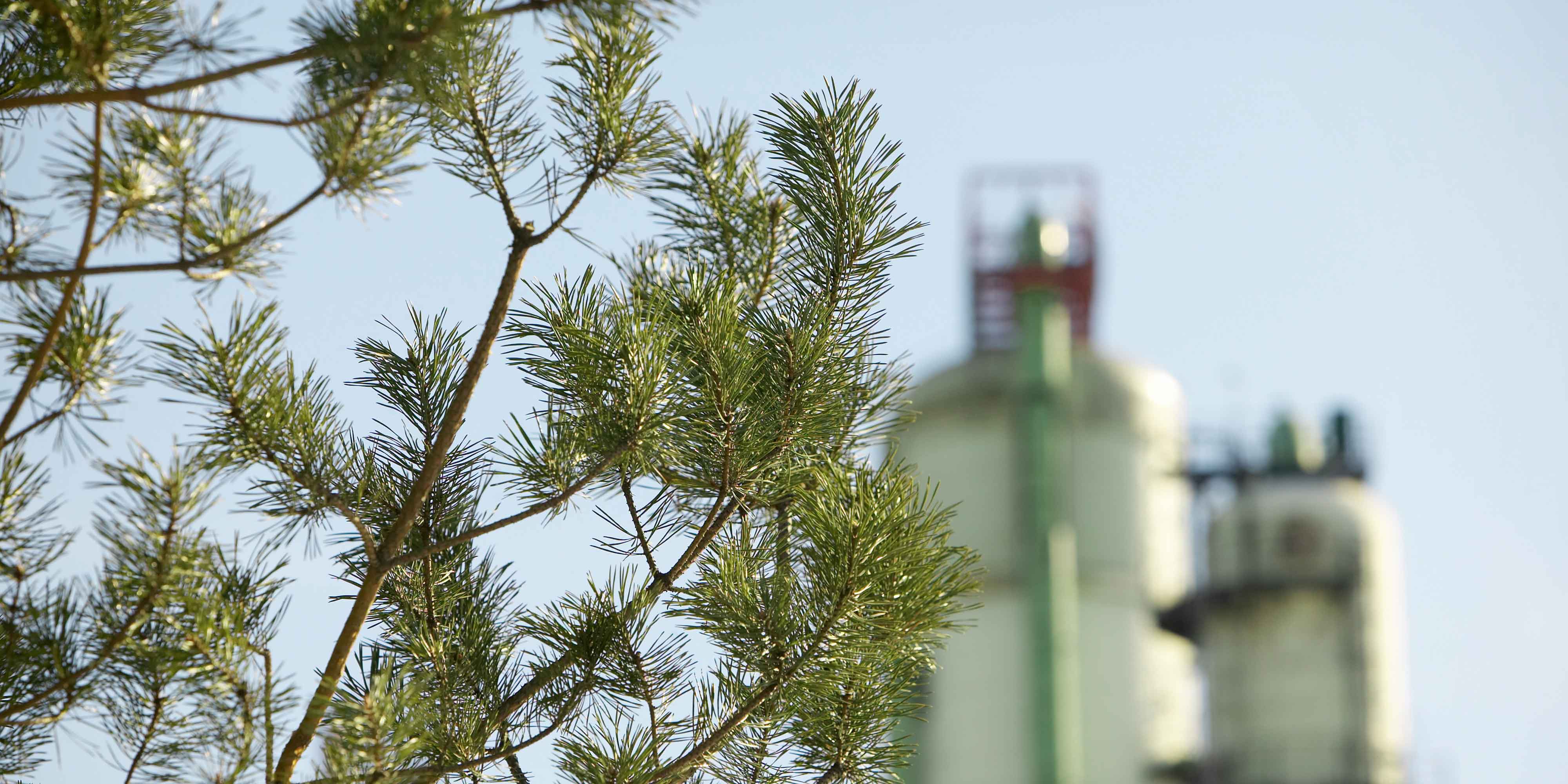
Sustainability
11 minute read
The Botany of Sustainability – the three species defining our future
The future is botanical. In our quest to decrease fossil dependency, the world will move from pumping crude oil to zooming into plant-based energy and raw materials instead. Here we uncover the secrets of three organisms reshaping the future: algae, corn and pine.
The human use of plants is as old as humanity itself. Throughout our history, we have relied on green organisms for food and shelter. When agriculture became our primary way of ensuring sufficient nutrition for our communities, we abandoned the hunter-gatherer lifestyle of our ancestors, setting the stage for the complex societies of today. Our interactions with plants have literally shaped our evolution.
Now, in a world bedeviled by climate change and air pollution, we have again turned to these ancient organisms for salvation. For over a decade, our mission has been to decrease our dependence on fossil raw materials by using renewable alternatives, such as plant biomass, instead. More recently, the focus has shifted to plant biomass that doesn’t compete with food uses. We have begun to explore biomass sources such as agricultural and forestry wastes and residues, as well as plants that grow where food doesn’t.
One of the most promising candidates for replacing fossil raw materials is algae. In a sense, the 1.2-billion-year-old tiny organisms have long been a part of our energy use, as a major part of fossil oil originates from ancient algae. Today, scientists know how to hack the process through which algae is transformed into a viable source of raw materials for fuels, chemicals and polymers. What once took millennia now takes days or hours.
“While algae are often called the food of the future, they may become a major raw material of the future, too.“
The rise of bio-based raw materials comes with multiple advantages: using fuels and other products manufactured from biomass results in lower levels of greenhouse gas emissions than using products derived from crude oil. The reason is that bio-based products can be manufactured from plants that themselves capture carbon dioxide as they grow. This is a significant advantage—and the reason why Neste and other pioneering companies have been investing in biomass research and development for over a decade.
Altogether, 1.5 billion tons of biomass could be harvested from plant waste and crops grown primarily for fuel each year in the United States alone, according to a study of American resources. This could replace up to 30% of the energy now provided by crude oil.
Let’s explore some of the most promising candidates for production of biofuels, bio-based polymers and chemicals as well as other biomass-based products. These green organisms range from tiny green dots to towering trees.
Microalgae—a miniscule miracle
Microalgae can be considered as primitive plants. These single-celled organisms, which sometimes form colonies, are the base organisms for all aquatic food chains and produce a substantial fraction of the oxygen we breathe. For thousands of years, humans have utilized algae as a food source. The Aztecs harvested it, and certain algae are considered a delicacy in Indian communities to this day.
While algae are often called the food of the future, they may become a major raw material of the future, too. Several species are now being investigated for their significant potential as raw materials for various applications due to their rapid reproduction rate and high carbohydrate and lipid content. And with the estimated numbers of algal species ranging from 30,000 to over a million, many more may prove useful.
What types of algae excite scientists right now?
Botryococcus braunii is a colonial alga found in fresh and brackish waters. Fossils of the species are associated with coal and oil shale (a soft type of sedimentary rock formed from clay and other minerals, packed with fossil energy). With new technologies, the same hydrocarbons present in pre-historic coal and oil shale can be extracted from living Botryococcus without the need for thousands of years of heat and pressure.
Botryococcus is one of the algae that can be “milked” for hydrocarbons and other chemicals. The procedure doesn’t damage the cells and they can produce further batches. As the derived products are often already hydrocarbons, they can readily be refined into fuels, such as gasoline and diesel. They can also be used as raw materials for the production of polymers and chemicals, for example.
“Algae-based biofuels will likely become increasingly viable in coming years.“
Chlorella vulgaris is a unicellular alga that many may be familiar with because of its popularity as a nutritional supplement. Due to its high chlorophyll content, it turns smoothies a photogenic electric green. But Chlorella’s potential reaches far beyond the kitchen.Due to its high content of oils and carbohydrates, it is a candidate for the production of a variety of bio-based products. Chlorella’s oil, making up to as much as 50 percent of its mass, can be refined into diesel or jet fuel or used as raw material for polymers and chemicals, and its carbohydrates can be fermented, for example, into ethanol.Chlorella is also remarkably resilient. In fact, growing Chlorella under nutrient-poor conditions may actually result in a more energy-rich plant than growing it under “optimal” conditions. This means that we could use cheap sources of nutrients, such as household wastewater, to feed Chlorella farms.
Will algae farming become mainstream?
Because algae can be farmed on land that might otherwise be useless for agriculture, these miniscule organisms do not have to compete with food crops. Some estimate that 5,000 gallons or more of oil could be produced by a single acre—a major improvement over other oil crops. Furthermore, because algae are voracious consumers of carbon dioxide, these algae farms could be set up near existing factories that use fossil fuels for energy production, to remediate some of their emissions.Algae-based biofuels will likely become increasingly viable in coming years, as we use genetic modification to optimize the production of algae’s components suitable for fuel production and cutting-edge extraction procedures. “Carbohydrates from algae are very good material for ethanol and biogas production, whereas oil is a great material for diesel or aviation fuel production,” confirms Aino-Maija Lakaniemi, a senior researcher at Neste.And fuels aren’t the only applications being considered. Algae can be used to produce bio-based polymers and chemicals, and they have also shown promise in creating base materials for biodegradable textiles. As a curiosity, a “living, breathing chandelier” on display at the Victoria and Albert Museum in London also uses algae encased in plastic leaves to process carbon dioxide and clean the air.
Corn—an energy goldmine
Corn was domesticated some 10,000 years ago in Mexico from a wild grass called teosinte. The oldest corn cobs in the world, discovered in a Mexican cave, date to 6,250 years ago per a 2001 study. The seeds of wild teosinte, however, were small and nearly unpalatable.Through centuries of selective breeding, we developed the gigantic corn ears we now roast for barbeque dinners and turn into other food products. This development process, completed well before genetics were truly understood, testifies to the ingenuity of early humans. Indeed, the 17th century explorer John Lawson called corn “the most useful grain in the world.” He was onto something: today, corn is the largest source of edible grain.
Did you know corn isn’t just fuel for our bodies?
Corn production leaves us with a large amount of corn waste, which we have luckily learned to utilize. “Corn is a very interesting plant. It is very efficient in terms of biomass production. It grows very fast and uses CO2 from the atmosphere very efficiently,” enthuses Perttu Koskinen, VP of Innovation, Discovery, and External Collaboration at Neste.
“With modern technology, corn production can be made nearly waste-free.“
The next big breakthrough will be utilizing every possible bit of the agricultural crops, such as corn, as raw material. With modern technology, corn production can be made nearly waste-free.
Grain residues can be salvaged as livestock feed, for example. Corn is also the largest source of ethanol fuel, which in some regions meets up to 10% of fuel needs. After ethanol production, we are left with a residue containing proteins and oil that is also a valuable resource. This inedible oil, called technical corn oil, or TCO, can be further separated and processed into renewable diesel, jet fuel or raw material for polymers and chemicals, while the protein rich residue is used as animal feed.
Renewable diesel has shown promise as an alternative to traditional fossil diesel. “Such renewable diesel fits perfectly without limitations to existing diesel vehicles and fuel distribution infrastructure, and it burns cleaner than conventional diesel because it is a very pure hydrocarbon product,” explains Koskinen. “It doesn’t have the aromatic compounds that we find in traditional diesel. That’s why many city bus fleets use our product. Switching from fossil diesel to this product enables its users to reduce their transport-related greenhouse gas emissions and improve the local air quality compared to conventional diesel.”
Will we soon use corn-based plastics?
Similarly to algae oil, technical corn oil can also be used to produce raw material for bio-based polymers and chemicals. Corn-based plastic has additionally shown promise as a biodegradable alternative to conventional, crude oil based plastic. In addition, even the stalk and leave residues of corn, known as stover, contain compounds that can be converted to fuels in the future.
Carbohydrates in cellulose and hemicellulose from stover can be fermented for additional ethanol. Even the lignin can be burned for energy to fuel the production processes. Alternatively, via thermochemical technologies, such as gasification, stover can be converted to diesel or jet fuels, among other things. In the future, all of these technologies together enable us to use corn “nose-to-tail”.
Pine—beyond the tannenbaum
Pine trees are living fossils—the ancestors of our modern spruces and firs coexisted with the dinosaurs. The oldest pine fossil dates to 140 million years ago, and even some living specimens pre-date modern humans. The oldest living tree is a bristlecone pine in California that is estimated to be nearly 5,000 years old. For early humans, pines provided sustenance and material for tools. A recent excavation found rope made of evergreen bark by the Neanderthals.
“Forestry practices produce billions of tons of residues, all of which can be used to generate renewable fuels, chemicals and materials.“
Pines have mythological and cultural significance as well. Perhaps most famously, the Celts and Romans valued the evergreen boughs of pine as symbols of persistence and renewal during their celebrations of the winter solstice. This tradition was later adopted by Christians. We can thank our pagan predecessors for the conifer scent that defines the Christmas season.
Using pine residues is a cost-efficient win-win
Pine is one of the main tree species intensively grown and harvested for its wood. In total, forestry practices produce billions of tons of residues globally each year. This includes tree tops and branches, as well as industrial residues, such as bark and sawdust—all of which can be used to generate renewable fuels, chemicals and materials.
“The cost of residues at their source is very low. The compensation paid for the forest owner only accounts for some percentages of the total cost of the feedstock. Most of the feedstock cost is created by activities in different parts of the supply chain, such as in collection and transportation,” notes Petteri Nuolivirta, a Technology Manager focusing on lignocellulosics at Neste.
Pine trees ooze fragrant resins that evolved to protect them from insect infestation. Today, we know how to convert this sticky substance into hydrocarbons and bio-based chemicals and materials. More recent, exciting breakthroughs now allow scientists to ferment pine’s cellulose and hemicellulose into ethanol as well.
An American company, among some others, has already begun to market a pine-based biofuel that uses the method of gasification, in which wood residues are heated to release a gas that is then refined into diesel or jet fuel. The fuel will be used by Southwest Airlines and the U.S. military. “Between every two pines is a doorway to a new world,” claimed John Muir, one of the first well-known environmentalists in the United States. With the advent of new technologies, we have unlocked a world of promise and potential within the trees themselves.
The role of plants in the future?
Much like the first human who sat down and sharpened a tree branch into a tool, we are honing our use of plants and their wastes and residues in ever more sophisticated ways. These renewable alternatives offer realistic hope in the campaign to wean ourselves from fossil oil dependence. By whittling down to the cellular level, we are able to refine plant matter into an array of useful compounds that have the potential to create a greener, more habitable planet for all life forms.
Science writer Richard Pallardy has worked as an editor for Encyclopedia Britannica. His writing has also appeared in National Geographic Learning publications, on Earth.com and Areo Magazine.





